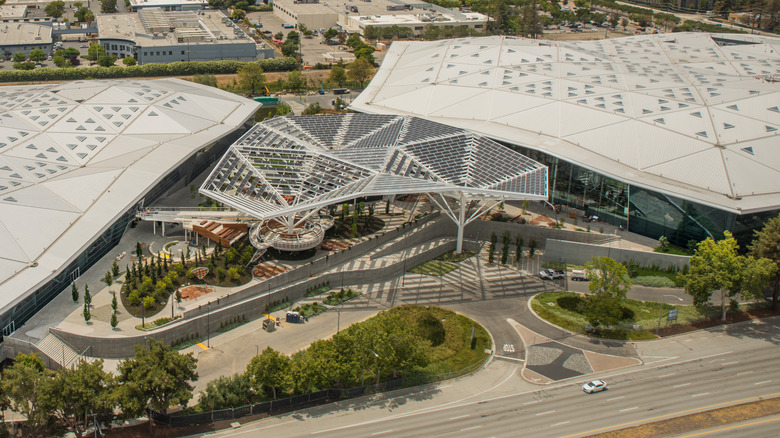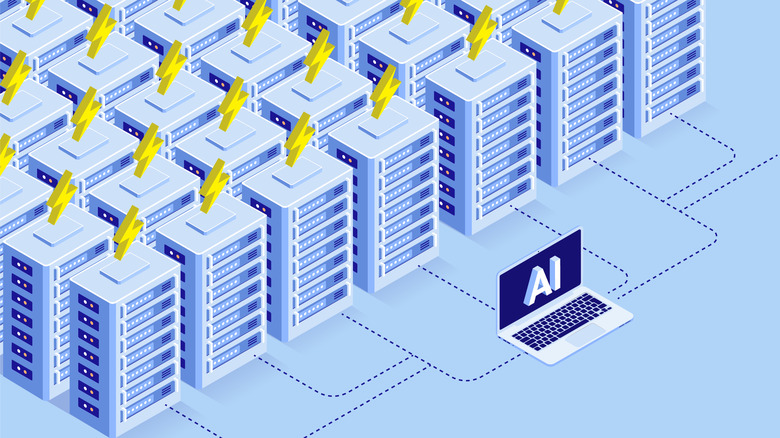These Massive CA Data Centers Are Sitting Empty – And It Could Stay That Way For Years
The NVIDIA headquarters is a gleaming, polygonal atrium at the heart of Santa Clara, California. Its campus stretches across the San Tomas Expressway, its physical footprint dwarfed only by its economic one. As of this writing, it has a market cap of over $5 trillion dollars, making it the most valuable company in human history. Without it, The New York Times pointed out, the United States economy would have grown just 0.1% in the first six months of the year.
NVIDIA's gangbuster economic coup is the result of the surging AI race that many economists increasingly view as a volatile bubble. The company was formerly known for selling some of the most powerful graphics cards for gaming. As it turns out, GPUs are to AI what shovels once were to prospectors during the gold rush. Companies have rushed to pack those chips into sprawling data centers across the globe, and NVIDIA has invested back into OpenAI, one of many deals that add up to an ouroboros of financial entanglements. What's less clear is how the bubble will pop, and whether anyone will see the pin coming.
All of that is why some alarms have been raised over two massive data centers in NVIDIA's own hometown, which are sitting dormant, and are respectively owned by the firms Digital Reality and Stack Infrastructure. Together, they encompass nearly 1 million square feet of space. It takes energy to generate your AI images and emails. Without a supply of power from the local utility, the computers — which have yet to be installed — can't power on. The snafu highlights not only the logistical bottlenecks emerging around AI infrastructure, but the enormous scale of currently nonexistent energy production that will be required to power it.
A combined 981,000 square feet of data center space sits dormant on NVIDIA's home turf
With 430,000 square feet spread across four floors, one data center owned by Digital Reality sits dormant in Santa Clara. An even larger site, located nearby and owned by Stack Infrastructure, boasts 551,000 square feet of space for future server installation, also collecting dust. Even accounting for their scale, the energy required to power the buildings is still eyebrow-raising: up to 48 megawatts each once they're loaded up with servers. For context, a single megawatt-hour is enough energy to power up to 1,000 residential homes for one hour. Bloomberg, which reported on this story, notes that the Santa Clara data centers in question are small when compared to others being built in states like Texas and New Mexico. Power requirements for AI are set to double by 2035, according to projections from BloombergNEF.
The data centers are unpowered because the local utility in Santa Clara, Silicon Valley Power, hasn't approved the supply of energy. In a quote, the utility said it is working on building out new energy projects slated for completion in 2028. Even if the project stays on schedule, the energy demand for AI is growing at an exponential rate that could exceed the rate at which new energy infrastructure can be built. The energy bottleneck represents the latest vulnerability in the AI market – it's the sort of problem that can only be solved over a period of years rather than overnight.
Demand for new energy isn't only a problem for AI companies, though. It's already impacting the average person in the form of higher electric bills, and could have implications for the future of our climate, as well.
AI is driving up the average American's electricity bill
Due to global reliance on non-renewable energy sources, energy is still a very finite resource on our planet. When a power-hungry industry like AI comes in, the surge in demand reduces available supply, which in turn leads to higher prices for everyone else. Already, AI has caused a sharp increase in energy bills for ordinary people, per NPR. Data from the Department of Energy reflects this, with the price of electricity having increased 13% over the past year in Florida alone, and a national average increase of over $0.04 per kilowatt.
Expansion efforts are unlikely to keep pace with the growth bomb of AI. But as long as the AI industry continues to drive the US economy, keeping that growth is likely to be a priority for everyone along the chain, from legislators at the federal, state, and local levels to leaders in the energy and tech sectors. MIT did some calculations and concluded that the AI sector could be gorging itself on as much power as 22% of all current US households by 2028. From ConEd to Xcel, your energy bill is likely to keep climbing as a result.
Economic burdens may collide with the ecological impacts of AI during a time when climate change has already worsened natural disasters. Extreme weather created by climate change is also causing power outages, which could necessitate redundancies in the power supply so that critical systems remain powered in an emergency. According to a Goldman Sachs analysis, an estimated 60% of needed power will come from fossil fuels. In other words, we could be headed toward a feedback loop where AI drives an increase in demand for power, which in turn drives worse climate outcomes and higher bills for everyone.


